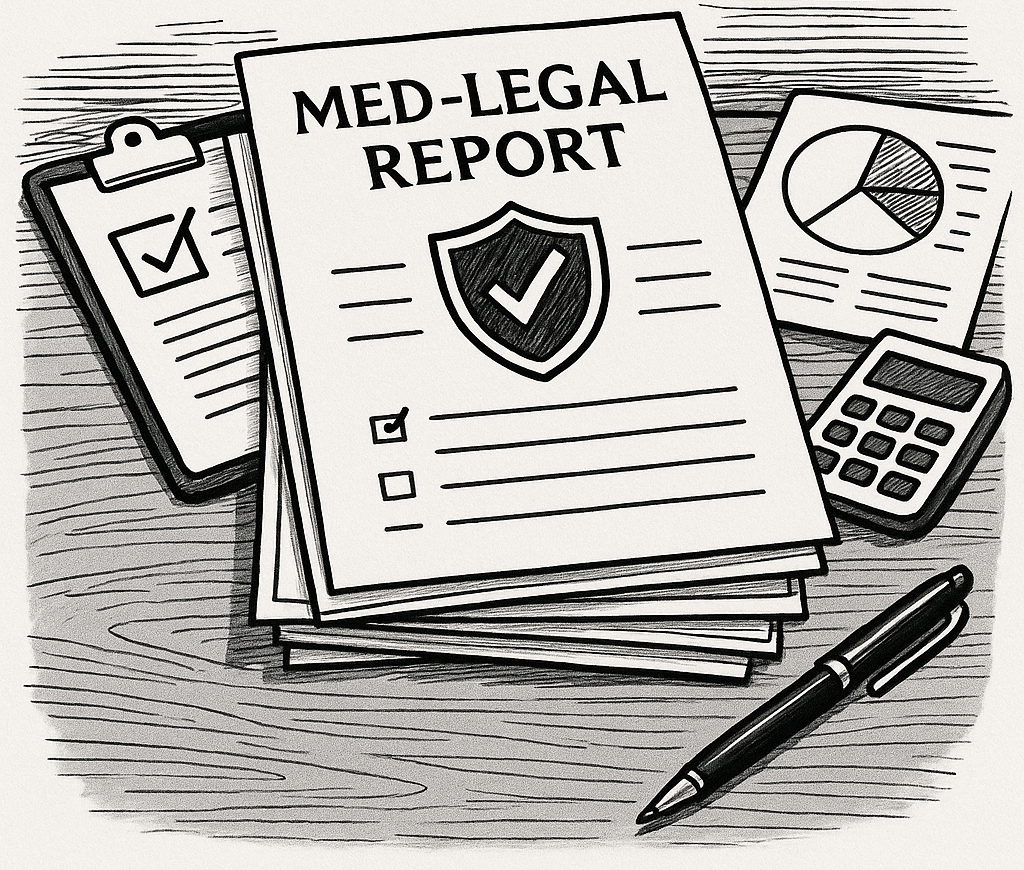
Building a Defensible Med-Legal Report: Ratings, Apportionment, and RFAs that Hold Up
A strong medical-legal report is not just about completing paperwork, it is about producing a document that can stand up to scrutiny in court, guide treatment decisions, and protect your professional credibility. This guide walks through practical strategies to strengthen your reports, from strict ratings to apportionment, treatment requests, and final quality checks.
Start with a Strict Rating, Then Go Further (If Needed)
Under Almaraz/Guzman, you may use an alternative rating method if it more accurately reflects impairment. Always begin with the strict AMA Guides rating. That gives the court a fallback if the alternative rating does not meet the substantial evidence test.
Practical tips:
- Document the baseline strict rating first.
- If applying an alternative rating, explain why it better reflects impairment.
- Avoid subjective terms like “fair.” Focus on accuracy and evidence.
Apportionment: Document the Path, Not Just the Number
Apportionment is one of the most scrutinized elements of a medical-legal report. It must be grounded in pathology or history, not speculation. Courts need a transparent path to your percentage allocation.
Key practices:
- Identify the preexisting condition clearly.
- Explain how that condition contributes to the disability.
- Quantify with justification (e.g., why 30% non-industrial vs. 50%).
- Use persuasive reasoning supported by medical evidence.
Treaters: Write Clear Requests for Authorization
For primary or secondary treating physicians, Requests for Authorization (RFAs) determine whether care is approved. A vague or unsupported RFA risks denial, while a well-cited one increases approval likelihood.
Tips for strong RFAs:
- Reference MTUS directly and cite specific page numbers or sections.
- Explain the clinical basis for the treatment recommendation.
- Avoid vague or boilerplate language.
Attention to Detail Protects Your Reputation
Even the strongest clinical reasoning can be undermined by avoidable errors. Attention to detail signals professionalism and reliability to every stakeholder.
Double-check for:
- Spelling or grammar errors.
- Inconsistent use of gender or body parts.
- Contradictions between history and findings.
- Updates in diagnostic imaging not addressed.
- Missed updates in follow-ups or supplementals.
Know the Rules: Legal Compliance Is Part of Quality
Technical violations can sabotage otherwise excellent reports. Ensure compliance with key statutes and regulations:
- Labor Code §4663 and §4664 for apportionment.
- Labor Code §4628 regarding ghostwriting and attestation.
- MTUS (Medical Treatment Utilization Schedule) for treatment guidance.
- Administrative Rule §10682 requiring documentation of all findings.
Final Thought
A defensible report is more than a requirement – it is a reflection of your expertise and integrity. By starting with the strict rating, justifying apportionment, crafting precise RFAs, and avoiding preventable errors, you build reports that are persuasive, credible, and respected.
Want to make sure your reports are written to meet quality standards? Download the DWC Quality Assurance Checklist to guide your next evaluation: https://share.google/X1i7VHXpMNDvIBKcs